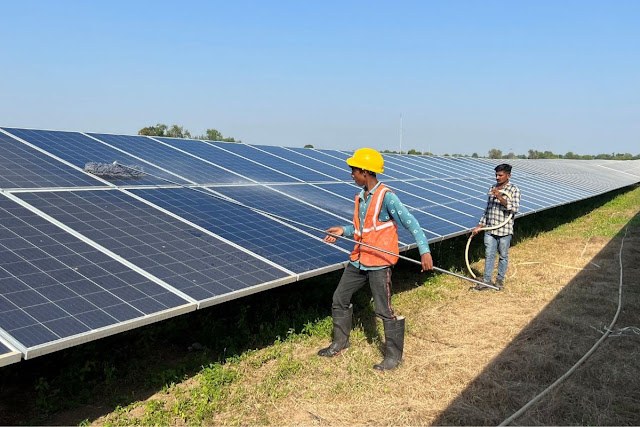grid-scale storage
India has been putting a renewed focus on reducing the country’s overall carbon footprint and meeting its Sustainable Development Goals (SDGs) commitments made during the Paris agreement. At the Paris climate talks in 2015, countries agreed to limit global warming to 1.5 degrees Celsius as compared to the pre-industrial levels to avoid extreme, destructive and likely irreversible effects of climate change.
India government is “very serious” about its target of achieving 500 GW of renewable capacity by 2030, and is supporting the industry to make a “really good effort” to achieve the target.
India, as the G20 presidency, has invited ISA as one of the guest international organisations. Mr Mathur (member of the Indian Prime Minister's Council on Climate Change) said a fall in battery prices by 2025 could drive the widespread adoption of solar plus battery solutions, leading to the realisation of India's ambitious target of installing 500 GW of renewable energy capacity by 2030 -- one of the five commitments Prime Minister Narendra Modi made during the 2021 Glasgow climate talks.
The transmission plan proposed by the ministry will provide an outlook to the renewable energy developers about the potential generation sites and scale of investment opportunities. It will also bring in transparency among the transmission service providers regarding growth opportunities available in the sector along with a staggering investment opportunity of around Rs 2.44 trillion.
India is projected to have 41 GW of energy storage capacity along with 777GW of total installed power capacity by 2029-30, according to a Report on Optimal Generation Mix for 2029-30. This energy storage capacity would include front-of-the-meter grid-scale storage, storage for integrating renewable energy directly, storage for distribution and transmission networks and for ancillary services provision to balance the grid.
India has been keen on battery energy storage systems, apart from pumped hydro storage. It has already announced a viability gap funding for setting up battery energy storage systems.
India’s national target is to produce up to 5 million tonne of green hydrogen by 2030. Recently a German energy firm entered a pact with an Indian alternative fuel company to manufacture hydrogen and methanol fuel cells in India. They would manufacture a type of hydrogen-based fuel cell, which is a modular and emission free solution which would gradually replace diesel-based generators and could also be used in a variety of other industrial applications. Government of India has launched Green Hydrogen Mission and is planning successive initiatives to foster growth of green hydrogen.

